Finding ‘The One’: A Diamond Solitaire
From the right cut to an optimal setting, here’s what you need to know before selecting a natural diamond that’s a perfect fit for you.
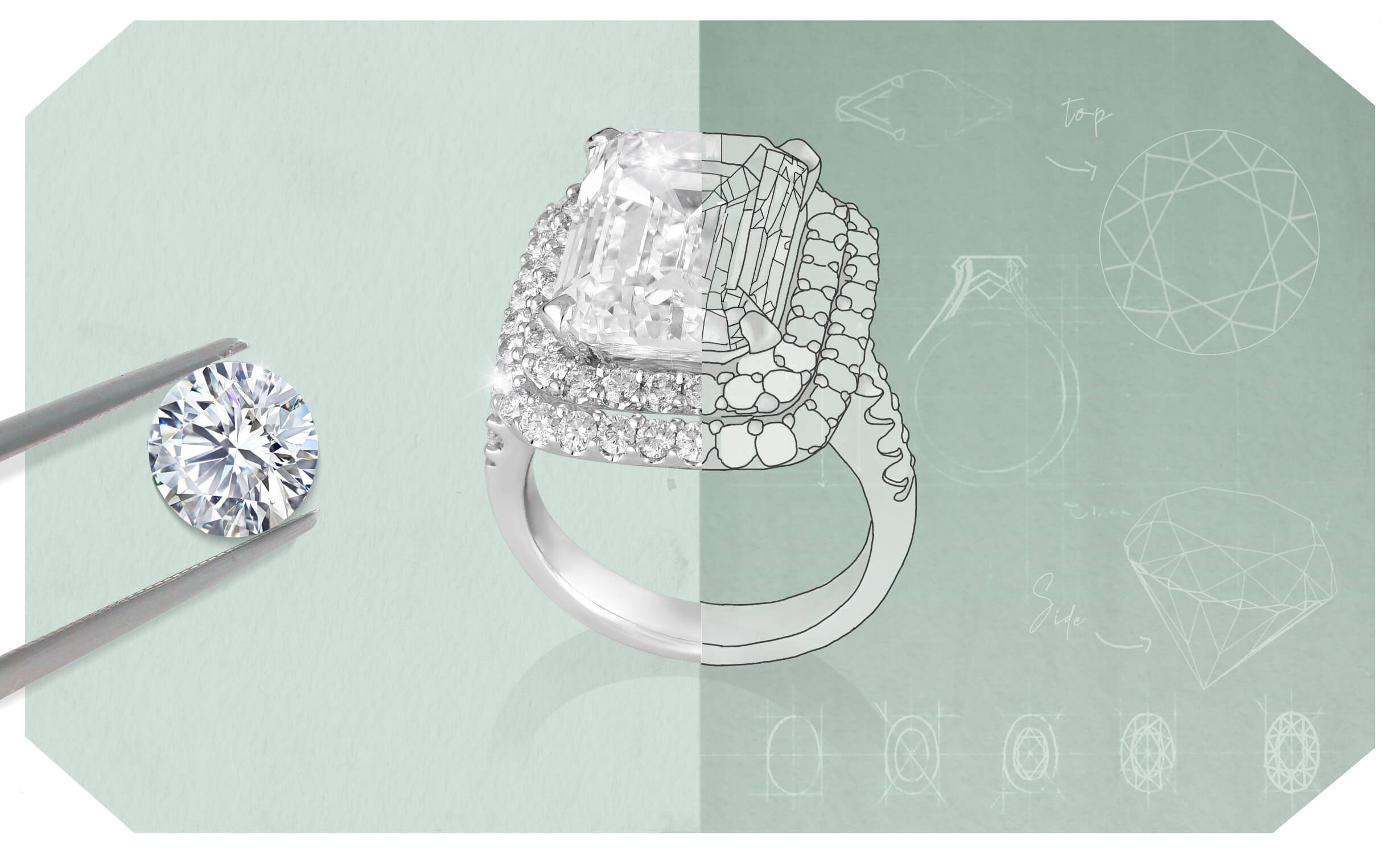
The most important part of picking your solitaire jewellery is finding the right cut, colour, carat and clarity for the sparkling stone in it. Jewellery: Hazoorilal Legacy
I was turning 21 and it was my first birthday away from family and home. In a new city, far from familiarity and longing for comfort, it wasn’t the special day I had imagined. Just then the doorbell rang and standing there was my mother with a velvet pouch clenched in her hands. This moment in time, the feeling of unbridled joy and comfort – is captured as a memory, a reminder in my first pair of diamond solitaire earrings – a gift from my mother on this milestone birthday. It made me realise the exhilaration that natural diamonds can evoke and the stories they carry.
Whether it’s a token of first love, a celebration of achieving a life goal or simply the beginning of a journey marked by support, solitaires are often the epitome of expression. From the first 15th-century engagement ring and Victorian round studs from the royal vault to Lady Gaga’s newsworthy yellow Tiffany diamond, some solitaires need no introduction. Standing by itself, a single diamond setting is indeed proof that less is more. But to navigate the details— what combination of 4C’s best suits your style and budget, what setting is most versatile or which profile is best to display the diamond can be daunting.
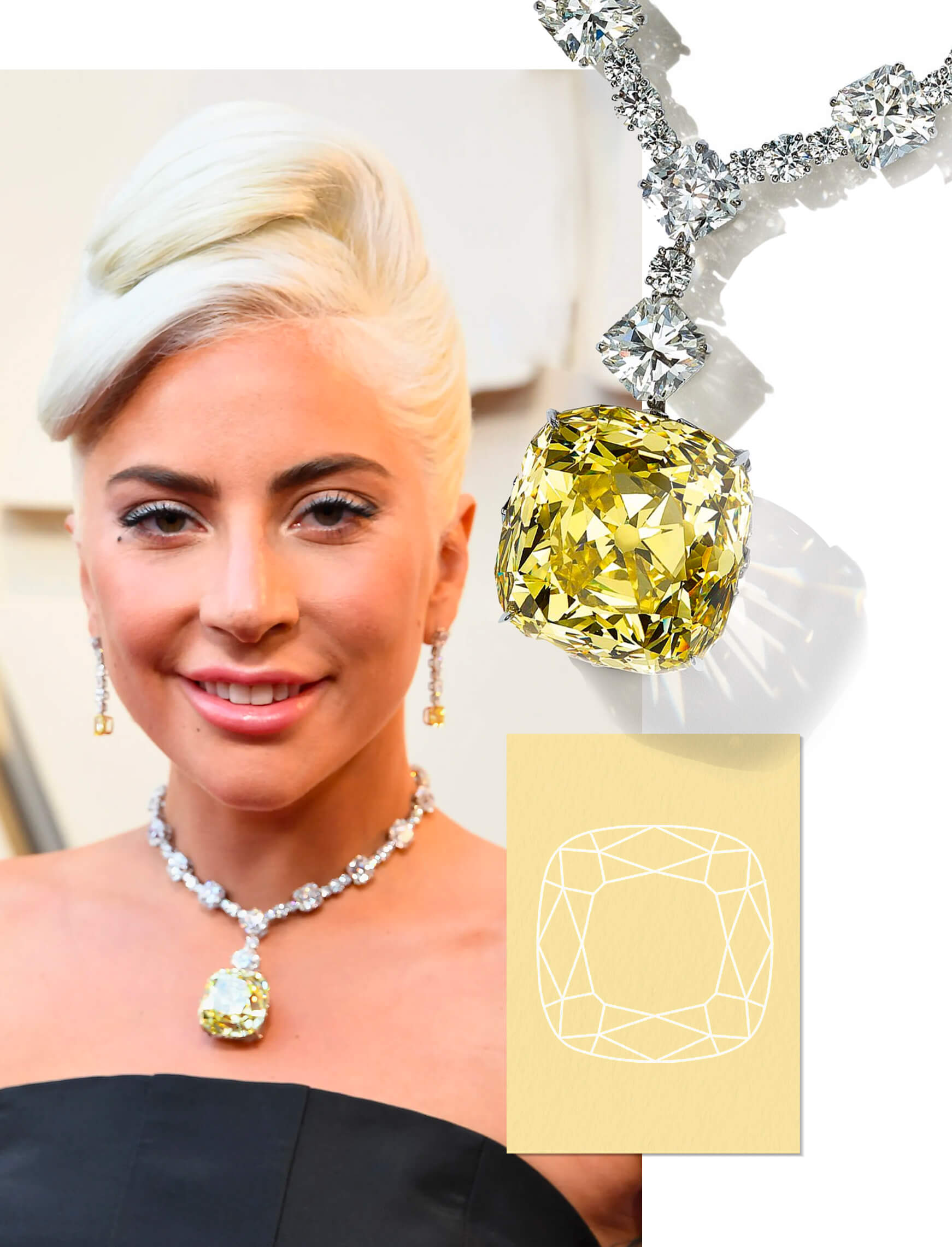
Begin with the cut.
The most important of the 4C’s, the cut gives the diamond its recognisable outline and enhances its natural brilliance that demands attention even across a room.
The cut quality impacts the diamond’s beauty and brilliance by crafting the way the stone interacts with light. The Cut Grading System assesses a diamond’s appearance, brightness, fire, and scintillation, which are the factors that make up whether a diamond is luminous or not. GIA assigns cut grades of five categories to each diamond, namely: excellent, very good, good, fair and poor.
More often than not, shapes and cuts are terms that are used interchangeably. The diamond’s cut refers to the craftsmanship that went into it, the proportions, polish, and final symmetry, visible to the trained eye. The shape is how the diamond appears on the outside.
What makes the round brilliant and square Princess cuts one of the most favoured today is their unmatched sparkle and classic clean lines. Consider these minimal shapes that make for the perfect versatile stud earrings that will never go out of style.
If you’re a romantic at heart, there’s no better fit than oval, pear or marquise cuts on pendant and rings alike. The elongated sides and rounded edges have notions of love etched in their history.
Meanwhile, the geometric, step-like facets and rectangular sections of a cushion or emerald cut are instant contemporary statement-makers. It’s no coincidence that some of the most covetable modern celebrity engagement rings—think Jennifer Lopez, Meghan Markle and Priyanka Chopra—have this cut in common.
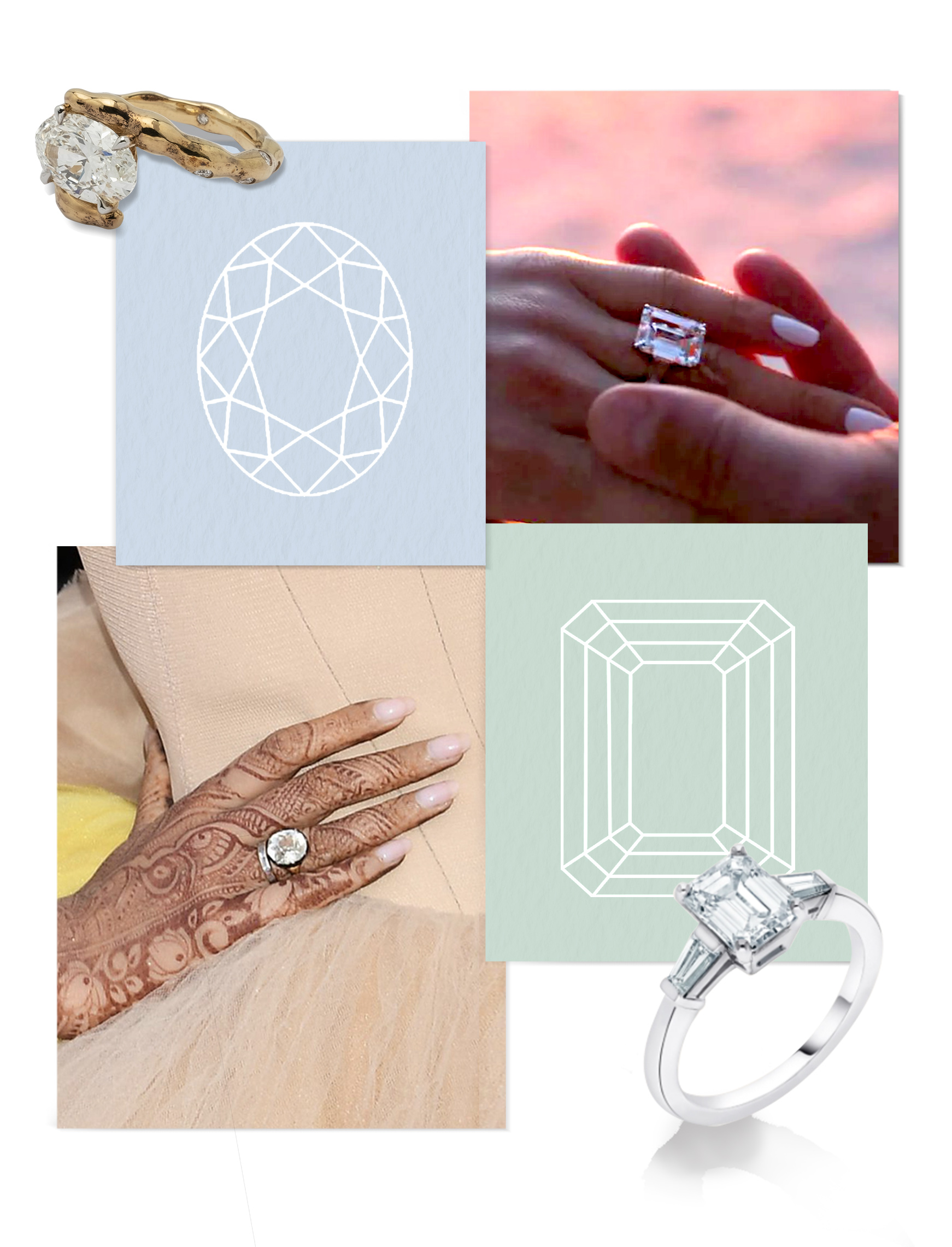
To get your 101 on a diamond’s cut, click here!
Next up, colour.
When it comes to colour, colourless natural diamonds rank high in the grade scale, as slight yellow, grey or brown tints are invisible to the naked eye. Only a few in a million natural diamonds are close to ‘colourless’ and hardly any, of these million will be of a rare colour. In a rarity, yellow diamonds are most desirable because of their lustre, fire and affordability as compared to hues like pink, blue, orange and violet that are usually reserved for custom-made designs. “A colourless, brilliant-cut pear-shaped solitaire ring or pendant in a classic martini setting is truly timeless,” says Harakh Mehta, Founder & CEO, Harakh. “It is a versatile shape and setting that will stay relevant through changing trends and whether you are in your teens or celebrating a jubilee birthday.”
Pro-tip: While shopping for a pair of solitaire earrings, ensure that your two diamonds are similar. They should be equal—or almost equal—in carat weight (i.e. 0.51 and 0.52 carat is usually standard), and should have the same colour, clarity, and cut grades.
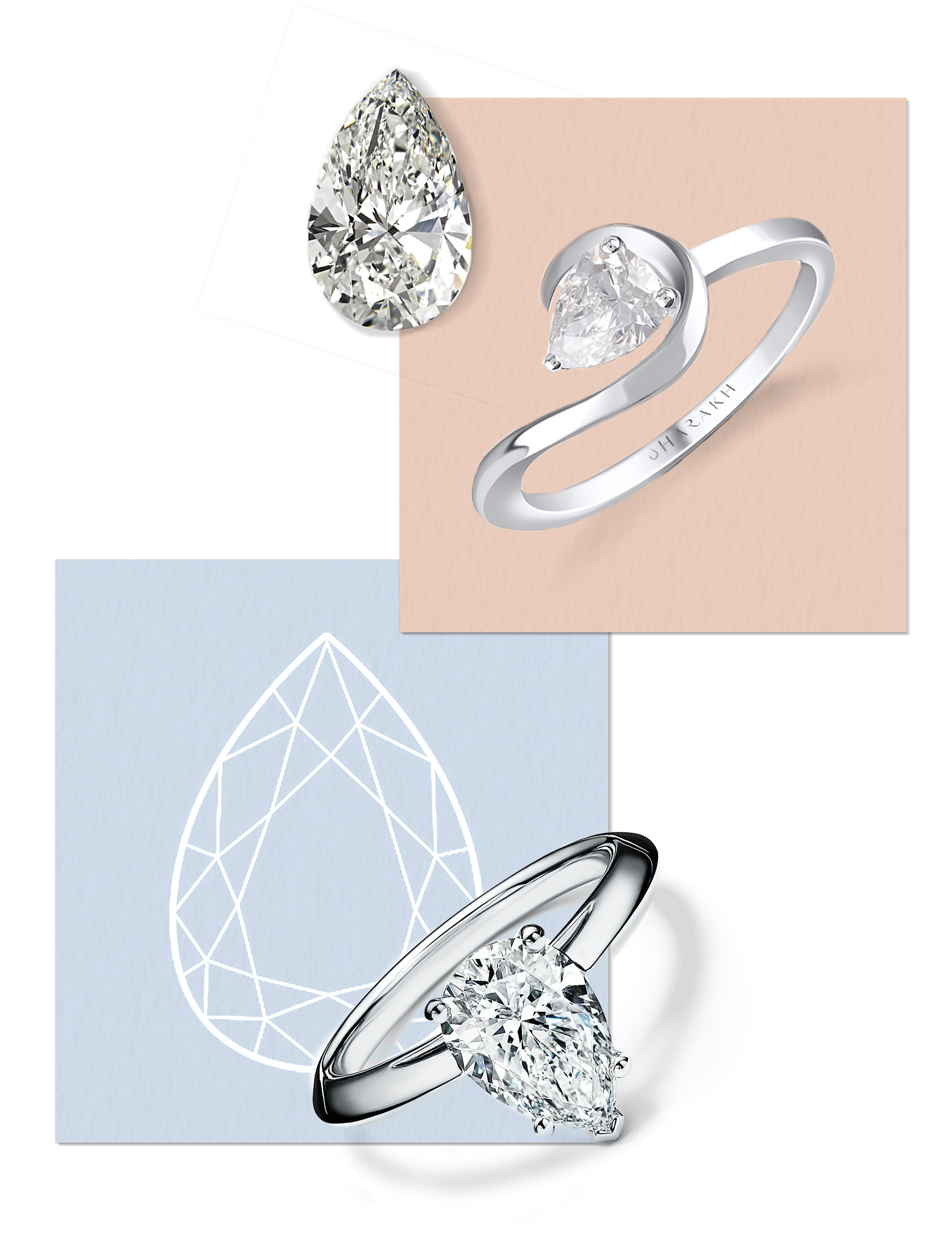
Jewellery: Harakh (Top) and Tiffany (Bottom)
Define your budget with carat and clarity.
It is factors like the carat weight of the natural diamond and its clarity, which is defined by the appearance of minute imperfections that determine how far you can stretch your budget. Diamonds are graded in clarity from categories called Included to Flawless under 10x magnification, with the exceedingly rare flawless graded stone fetching the highest price.
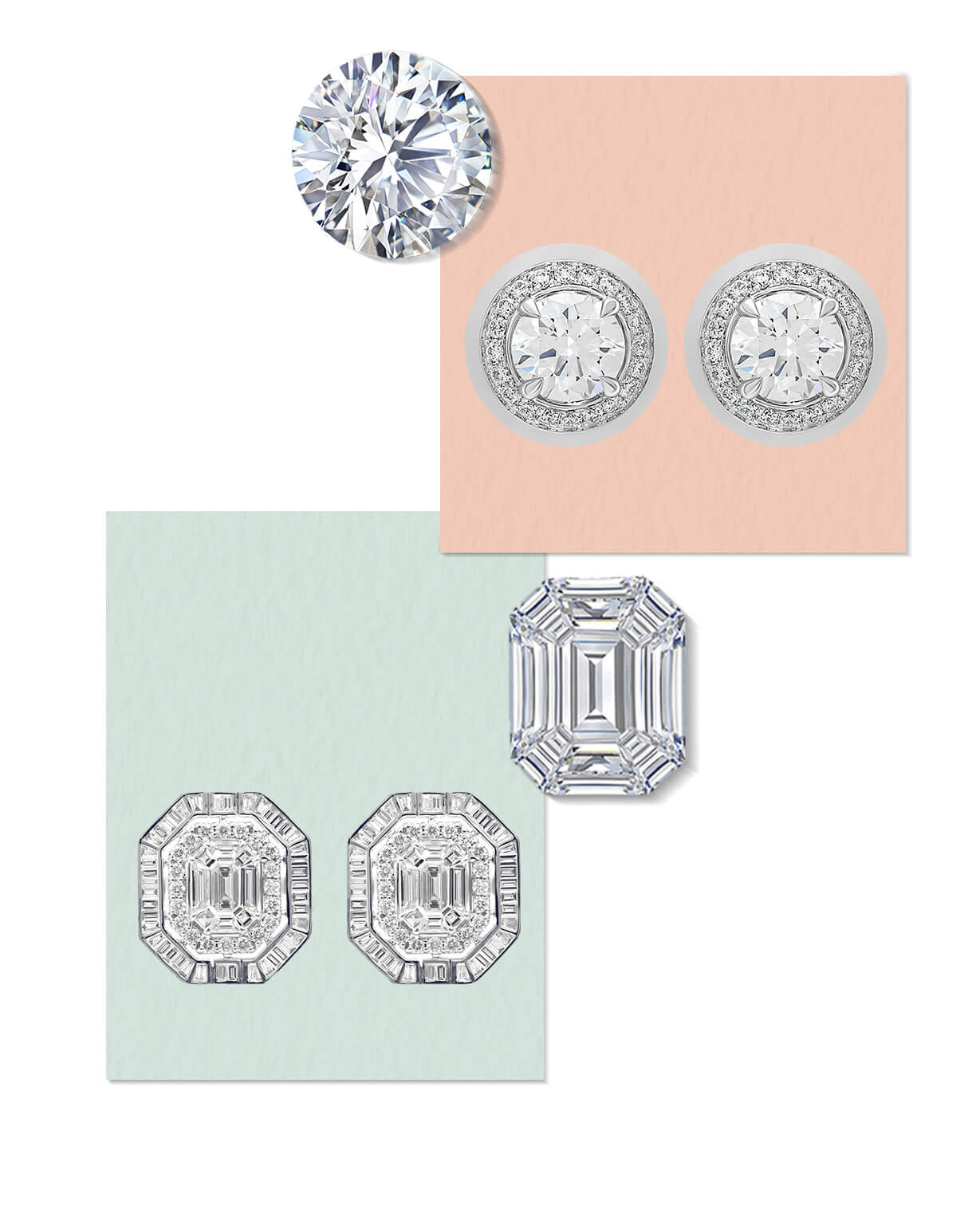
Jewellery: Her Story (Top) and Jaipur Gems (Bottom)
Mostly as you go with colourless, flawless and ‘very very slightly included’ diamonds, the size tends to get smaller than what you would get with ‘included’ diamonds,” explains Siddhartha Sacheti, CEO of Jaipur Gems.
Given that diamond prices depend on such a wide range of combinations of the 4C’s, it is very difficult to give an accurate estimate for “diamonds” as a whole. For an objective value, consider opting for diamonds certified by an independent grading lab, but it’s equally important to remember that the prices sold by retailers are also subjected to a markup beyond the intrinsic value of a diamond. With a budget ranging from INR 80,000 to INR 1,20,000, you can expect a 0.75 carat solitaire with average colour and clarity grade. (source CaratLane)
Make the best of your selected diamonds with settings.
When it comes to diamonds, bigger is not always better—weight can be relative to your finger size or face shape, so considering the right setting is paramount. Once you have the ideal diamond, its placement and mounting can be deployed to further enhance its natural beauty. To better navigate the possibilities of settings, explore the most popular styles here.
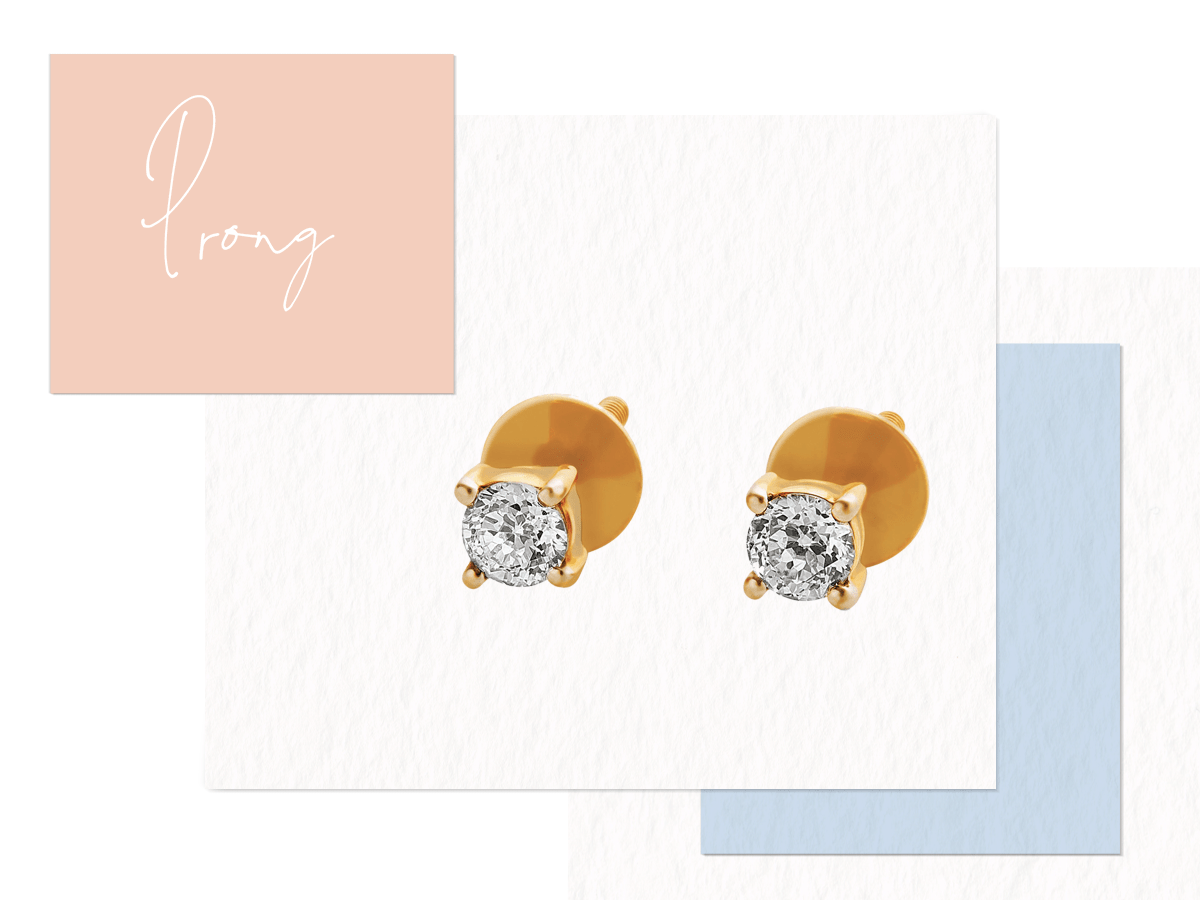
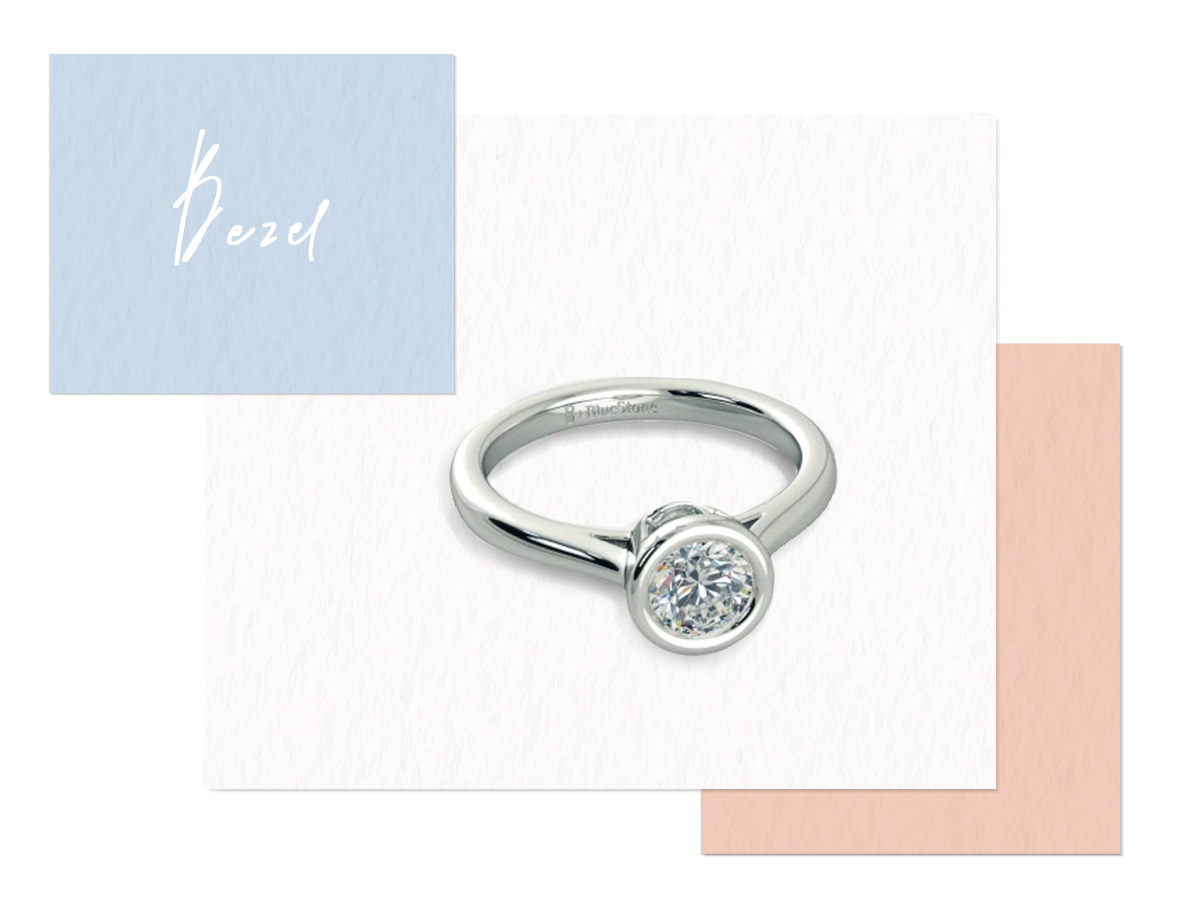
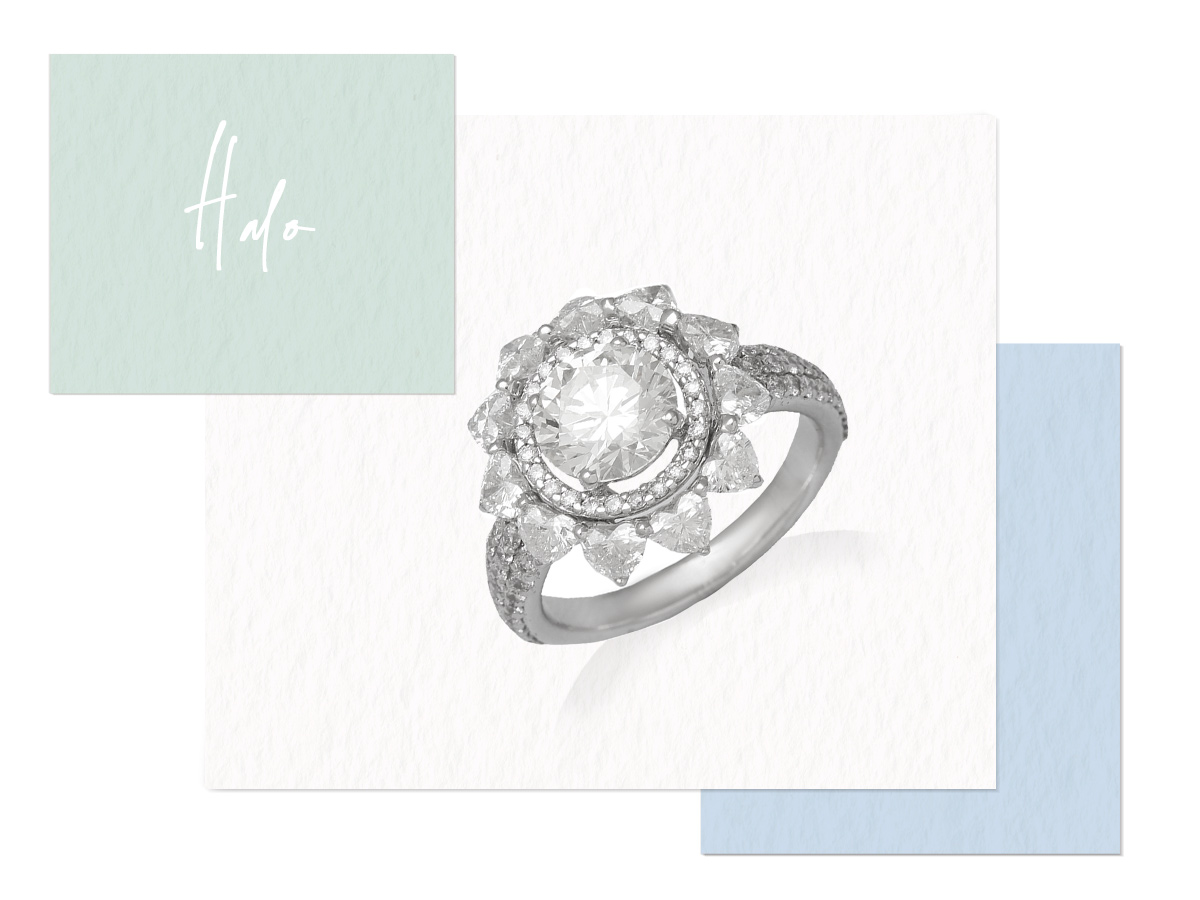
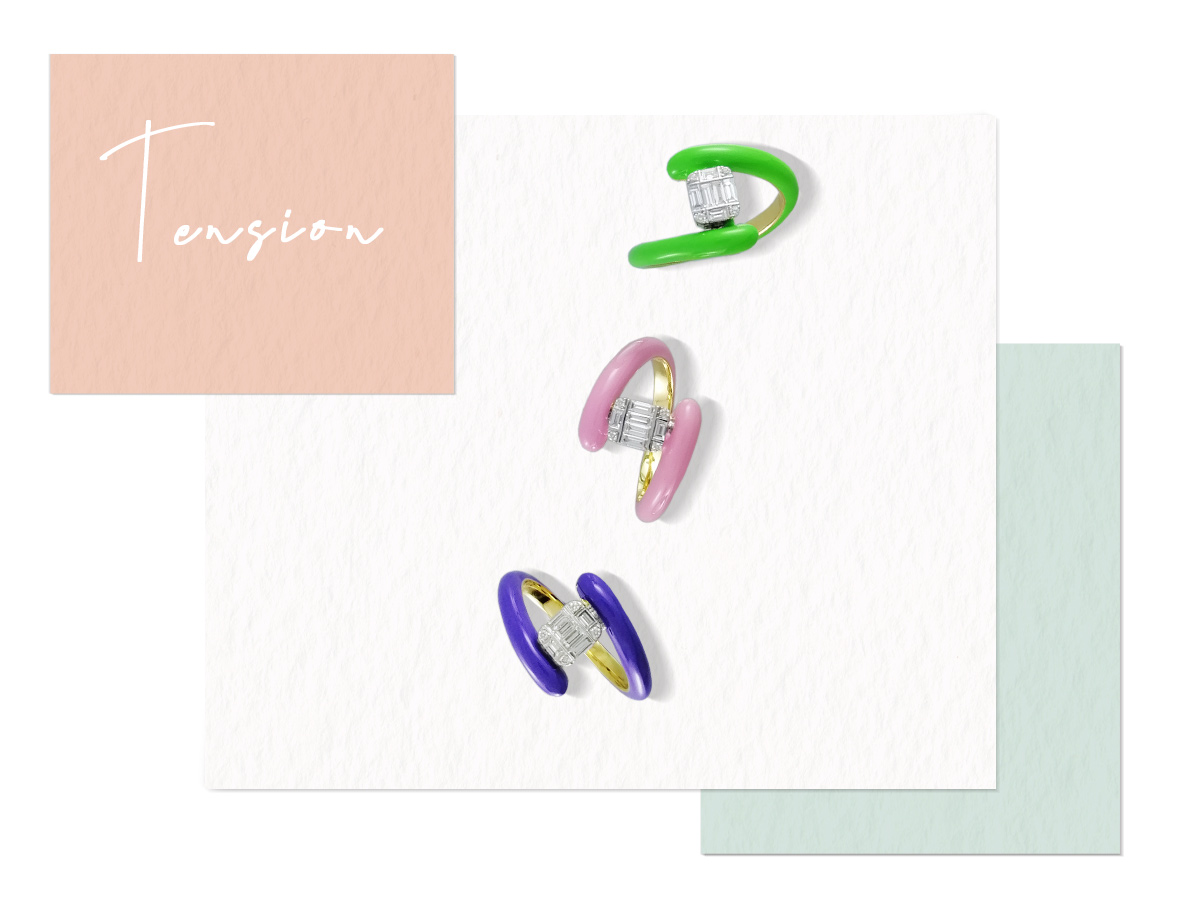
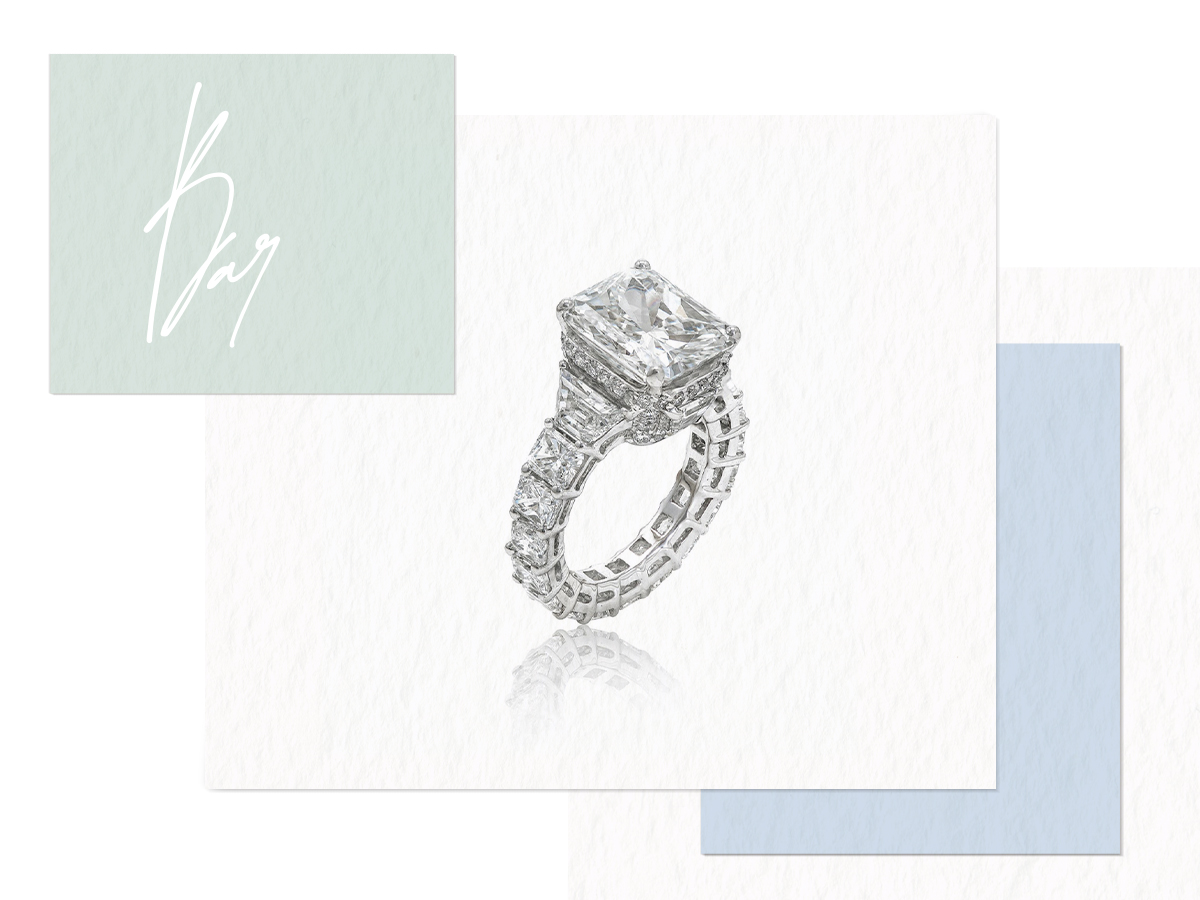
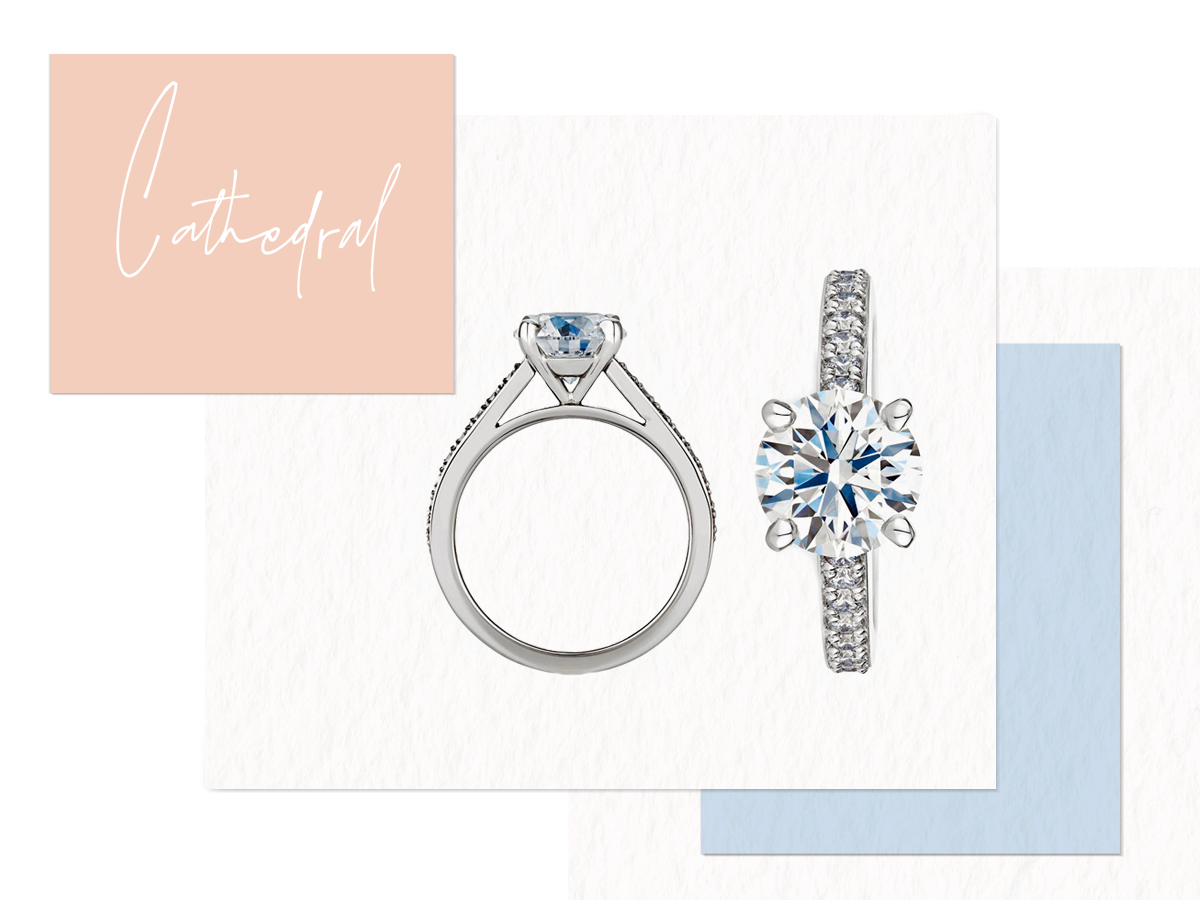
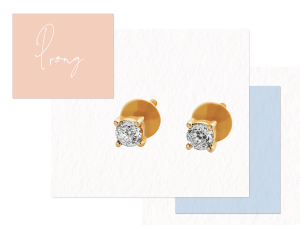
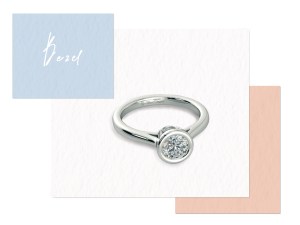
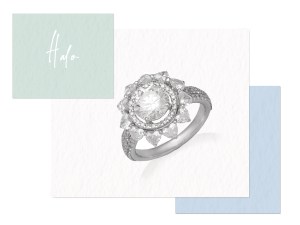
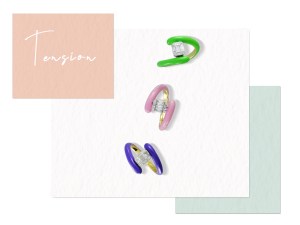
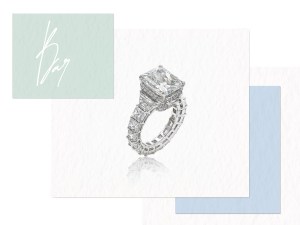
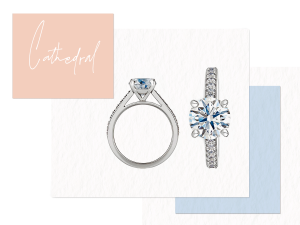
Prong:
Perhaps the most prevalent setting of today, a prong setting emulates the metal claw that holds the diamond solitaire in the piece. Whether a ring, pendant or earrings, this setting is highly customisable, meaning that you have control over the number of points, their shape and visibility of the diamond. Typically designed between three and six, prongs can be tuned flat, rounded or V-shaped, all accustomed to the original cut of the diamond. As prongs cover the least amount of a diamond’s surface area, this setting maximises visibility (aka more sparkle) and is best suited for piercings.
Variations in prongs:
With the setting’s side profile in full view, it’s also important to take notice of the type of mounting. While a ‘basket’ secures the diamond with four pillars and a perpendicular bar, ‘martini’ settings use just three prongs, putting the stone on better display. ‘Crown’ prongs bring most attention with their thick use of metal and interesting shape from the side.
Bezel:
The second common setting, bezels are thin metal frames that wrap the diamond in its entirety. While the custom metal rim is known for best protecting the diamond from everyday wear and keeping it securely in place, the framework is suitable for brilliant cuts in stud earrings.
Halo:
The best way to make your diamond solitaire sparkle, even more, is by adding a ring of smaller baubles around it. The halo setting can also encase the diamond with other gemstones, giving the illusion of an even bigger carat in your pendant.
Tension:
With ultimate precision and the right amount of pressure, the tension setting alludes to an appearance of a floating diamond suspended between two ends of the case. A common sight among platinum and gold bands, men’s wedding rings are ideal to show off the suspended style.
Bar:
Similar to the look of a channel setting, two bars are used in place of covering the solitaire from all sides. Often combined with smaller diamonds, pearls or other gemstones in a line, the sleek setting is made for contemporary engagement rings.
Cathedral:
For traditionalists, the cathedral setting is an ideal option for heirloom engagement rings. Elegantly curved metal arches hold the solitaire high in place, while the stone appears bigger.
In solitaires the possibilities are endless—while cushion and emerald cuts can appear larger than pear cuts in the same weight, a flawless one carat diamond can be valued more than its double counterpart with slight inclusions. But it’s certain that any piece of natural diamond jewellery with solitaires in focus is bound to stand the test of time and trends.
